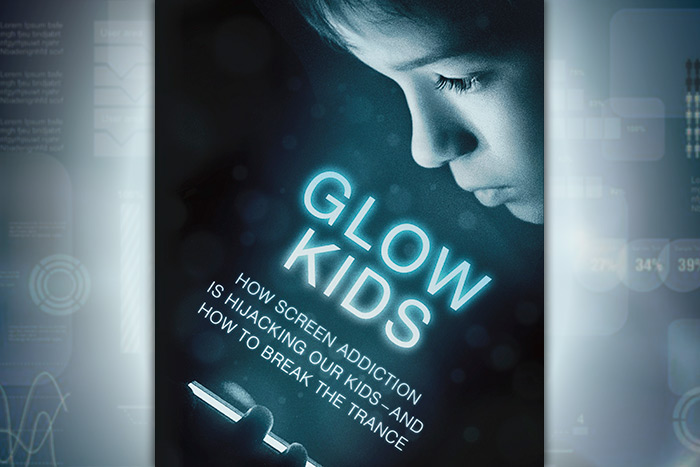By the Book: 'Glow Kids' Links Screen Tech to Addiction, ADHD

Screen technology has invaded our lives, for better or worse. Staying connected to the internet is virtually mandatory. Recent generations have matured in decades of unprecedented technological advancement. Young children play with tablets and smartphones at the dinner table, watch video screens embedded in the backs of car seats and spend hours transfixed by hundreds of cable channels.
Dr. Nicholas Kardaras, Ph.D. has observed this behavior and written a book, Glow Kids: How Screen Addiction is Hijacking Our Kids—and How to Break the Trance, in which he presents research about the effects of glowing screens on the developing brains of children.
If you give a child a tablet with a game, you’ve perhaps bought yourself some minutes (hours?) of uninterrupted calm, but what else have you done? In Glow Kids, Kardaras lays out his argument that “an ever-increasing amount of clinical research correlates screen tech with psychiatric disorders like ADHD, addiction, anxiety, depression, increased aggression and even psychosis.”
Kardaras is one of the country’s foremost addiction experts and the Executive Director of The Dunes East Hampton, a top rehabilitation center. He’s also a former Clinical Professor at Stony Brook Medicine, and has taught neuropsychology at the doctoral level. In short, Kardaras has the evidence, knowledge and experience to back up his claims. According to Kardaras, “recent brain-imaging studies conclusively show that excessive screen exposure can neurologically damage a young person’s developing brain in the same way that cocaine addiction can.”
It sounds alarmist, and many of the case studies Karadaras cites—Mark, “who would steal from his mother to buy video games and game consoles; he would get violent and aggressive when he wasn’t allowed to play;” Emily, a teenager who said she would hang herself if her mother took away her access to social media—are extreme. Perhaps easier for parents to relate to is the correlation Kardaras points out between too much screen time and a child’s decreased ability to interact with the “real” world. “Our screens and screen culture have normalized the experience of having conversations with little or no eye contact. We’ve seen it in adults, and we all have certainly seen it in kids. Unfortunately, we are losing something vital and inherently human,” writes Kardaras.
Once hooked, “kids…[develope] compulsive and addicting [screen] habits precisely because [those habits] quench our thirst for novelty while tickling our dopamine-reward pathways.” The fantasies and rewards of social media, the internet and video games are more desirable than “the reality of…math homework or chores.” And the type of concentration required to interact with social media, the internet or video games “is not the kind that will help [kids] thrive in school…‘It’s not sustained attention in the absence of rewards; it’s sustained attention with frequent intermittent rewards.’”
Kardaras understands that in order to be successful in most fields, one will have to interact with screens. His focus is on not allowing children sustained use of screen technology while their brains are still developing. “[Lose] the screens for the first few years of their lives. During those key developmental periods, let them engage in creative play.…Let them explore their surroundings and allow them opportunities to experience nature.…But most importantly, let them experience boredom; there is nothing healthier for a child than to learn how to use their own interior resources to work through the challenges of being bored.”
At the end of the book Kardaras provides links to resources and advice to help children have a healthy relationship with screen technology. Glow Kids is a must-read for parents, prospective parents, educators and anyone interested in learning about how the screens we look at every day affect us.



